Discover the 10 best gym ball exercises to improve strength, balance, and flexibility. Perfect for home workouts. Try these moves today!
Exercise balls, also known as stability balls, Swiss balls, or gym balls, are fantastic tools for enhancing core strength, flexibility, and overall fitness. Whether you’re a beginner or a fitness enthusiast, these exercises will help you build stability and endurance.
The exercise ball, sometimes known as the ‘Swiss ball’, is nothing new in the field of fitness and rehabilitation. The first of its sort was created in 1963 by Aquilino Cosani, an Italian plastics producer, and was first known as the “Pezzi Ball”.
Within a decade of its inception, physical therapists around Europe began to employ the ball, including a Swiss physical therapist specializing in posture re-education and back rehabilitation. In the 1980s, American physical therapists grew attracted to European rehabilitation methods, and they were so pleased with the Pezzi Ball that they took it back to the US and called it the ‘Swiss Ball’. You can find various types of exercise balls, such as the Pilates Ball and Pregnancy Ball. In this article, we’ll look at the many advantages of using an exercise ball, how to include it in your workout routine, and important safety precautions.
What is an Exercise Ball?
An exercise ball is a large, inflatable ball made from soft, elastic PVC material. Exercise balls, also known as Swiss balls, physio balls, balance balls, body balls, gym balls, Pezzi balls, Pilates balls, yoga balls, therapy balls, and even Swedish balls all mean the same thing. They are used for rehabilitation and fitness and work by forcing the body to balance against the ball’s instability, leading to greater muscle activation. This results in improved back and spine health, core stability, posture, and muscle balance. They come in different sizes, typically ranging from 45 cm to 85 cm in diameter, allowing users to select the size that best fits their height and exercise needs.
Benefits of Exercise Ball Workouts
Exercise ball workouts provide numerous benefits:
- Enhanced Muscle Activation: The instability of the ball forces your core muscles to work harder to maintain balance.
- Improved Flexibility: The ball allows for a greater range of motion, improving flexibility, especially in your spine.
- Versatility: It can be used for a wide range of exercises, from stretching to strength training.
- Convenience: Exercise balls are affordable and easy to use at home or in the gym.
Ready to start sculpting your muscles and improving your stability? Try these 10 stability ball exercises that can be done in the gym or at home.
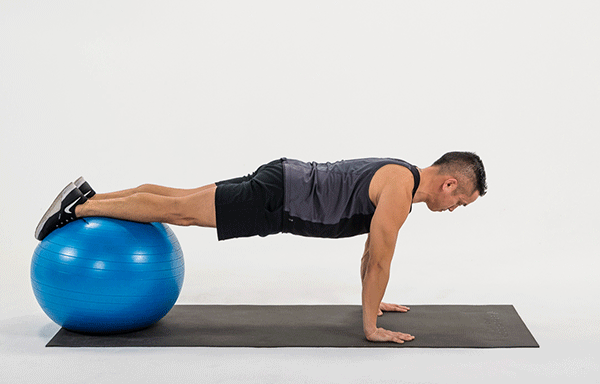
1. Jackknife
How to Do It: Get into a push-up position with your shins resting on the ball. Engage your core and draw your knees towards your chest, keeping your back straight. Extend your legs back to the starting position and repeat.
Benefits: This move is a killer core workout! It improves abdominal strength, enhances stability, and strengthens your shoulders and arms. Get your gym ball here.
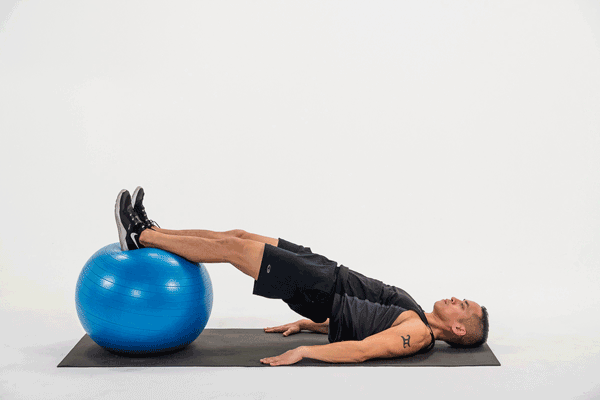
2. Hamstring Curl
How to Do It: Lie flat on your back with your heels on the ball and your arms by your sides. Lift your hips to form a straight line from your shoulders to your heels. Bend your knees and roll the ball toward you, then extend back.
Benefits: This exercise fires up your hamstrings, strengthens your glutes, and improves lower-back stability.
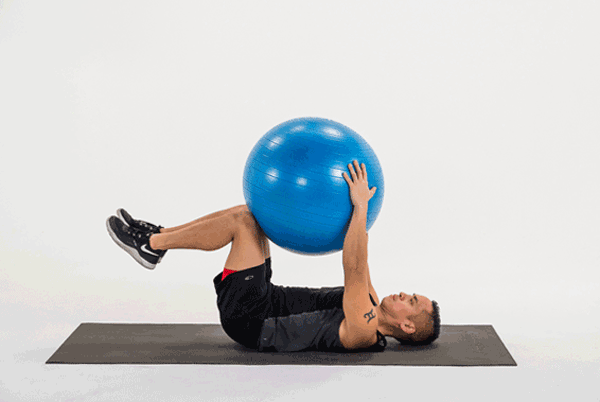
3. Deadbug
How to Do It: Lie on your back holding the ball between your hands and knees. Slowly extend one arm and the opposite leg while keeping the ball stable. Return to the center and switch sides.
Benefits: Builds coordination, strengthens the core, and improves lower-back support.
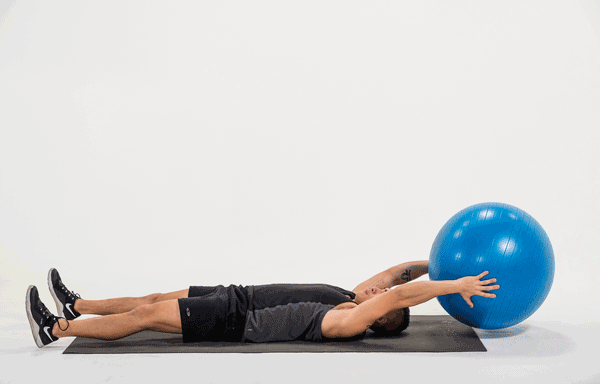
4. Exercise Ball V-Pass
How to Do It: Lie on your back, holding the ball between your hands. Raise your legs and pass the ball to them. Lower both your arms and legs without letting them touch the floor, then bring them back together and pass the ball to your hands.
Benefits: This full-body move strengthens your core, enhances flexibility, and builds endurance.
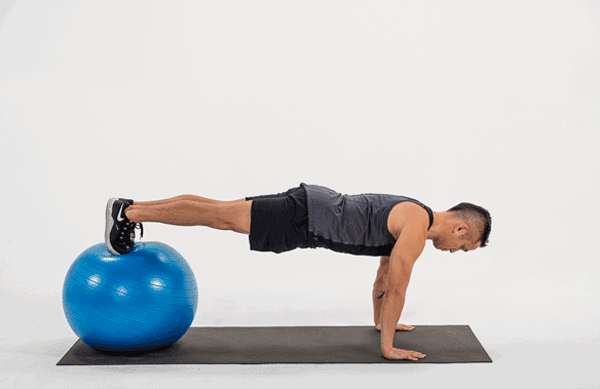
5. Decline Push-Up
How to Do It: Place your feet on the ball and your hands on the floor in a standard push-up position. Lower your body until your chest nearly touches the ground, then push back up.
Benefits: Elevates upper-body strength, engages the core, and improves balance for a more challenging push-up variation.
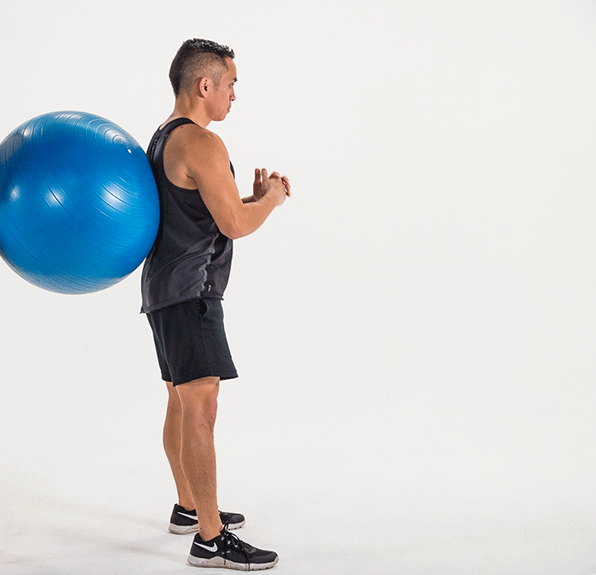
6. Wall Squat
How to Do It: Stand with the gym ball between your lower back and a wall. Slowly lower into a squat, keeping your knees in line with your toes. Push back up and repeat.
Benefits: This move is great for leg and glute activation, improving posture, and enhancing lower-body endurance.
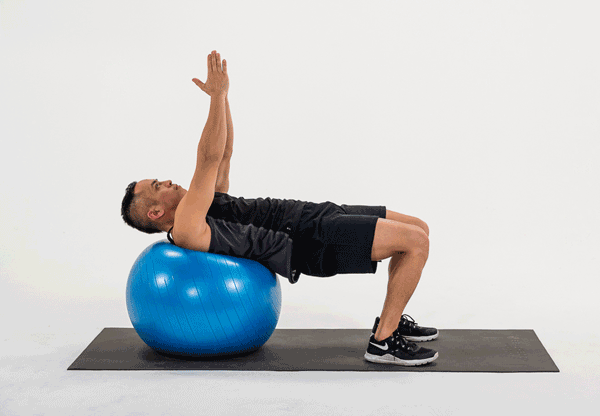
7. Russian Twist
How to Do It: Lie with your upper back on a stability ball and your feet flat on the floor with your knees bent at a 90 degree angle. Brace your core and keep your hips extended so your torso forms a straight line from head to knees. Engage your core, and twist your torso from side to side.
Benefits: Targets the obliques, strengthens the core, and enhances rotational flexibility.
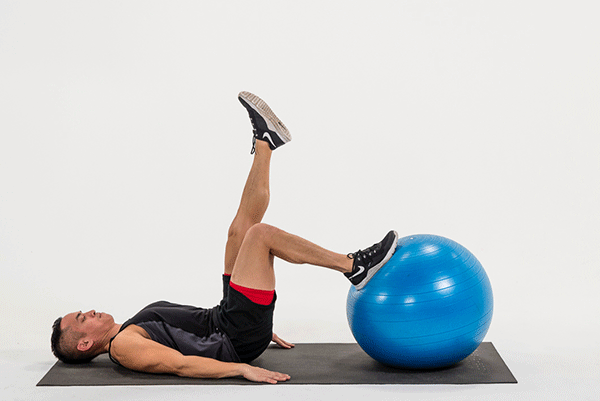
8. Single-Leg Stability Ball Hip Thrust
How to Do It: Lie on your back with one foot on the ball and the other lifted. Press through your grounded foot to lift your hips, then slowly lower back down.
Benefits: Strengthens the glutes, hamstrings, and lower back while enhancing balance.
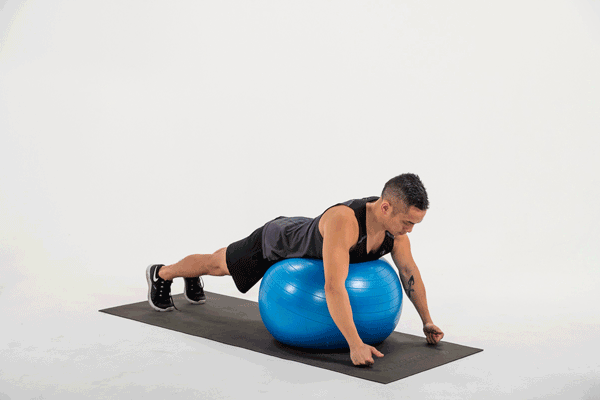
9. Exercise Ball “I-Y-T” Shoulder Raise
How to Do It: Lie face-down on the ball and lift your arms in “I,” “Y,” and “T” shapes, holding each position briefly.
Benefits: Builds shoulder strength, improves posture, and stabilizes the upper body.
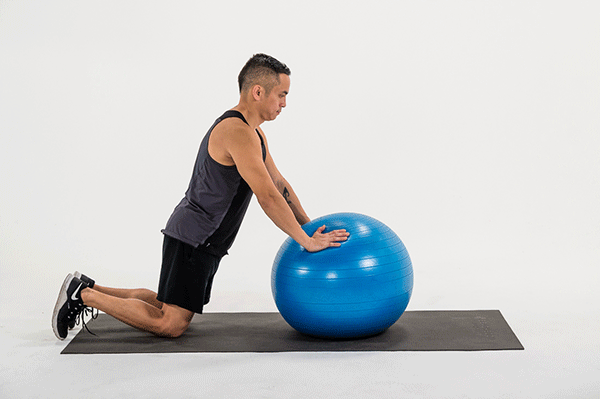
10. Stability Ball Rollout
How to Do It: Kneel with your hands on the ball and slowly roll forward, extending your arms while keeping your core tight. Roll back to the starting position.
Benefits: Develops core stability, strengthens shoulders, and improves overall balance.
Whether you’re a beginner or a fitness enthusiast, these exercises will help you build stability and endurance. Enhance your workouts today with a high-quality gym ball or a Pilates ball and take your fitness to the next level!
Frequently Asked Questions
Most Pilates balls come with a straw or small pump for easy inflation. Insert the straw into the air valve, blow until the ball reaches your desired firmness, and close the valve.
The right size depends on your height. Typically, a 55cm ball suits users under 5’4”, 65cm for 5’4”–5’11”, and 75cm for taller individuals.
Yes! Stability ball exercises improve core strength and posture, reducing back pain over time.
Yes, the Pilates ball is often used in rehabilitation and physical therapy exercises. It can help improve balance, strength, and flexibility for individuals recovering from injuries.
Incorporate gym ball workouts 3–4 times per week for the best results.

